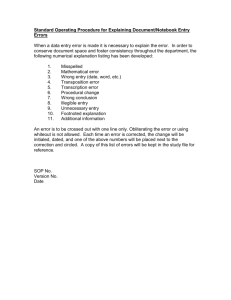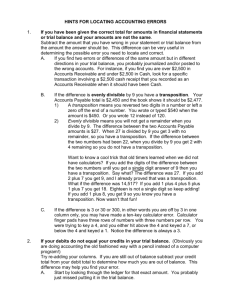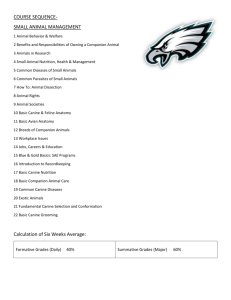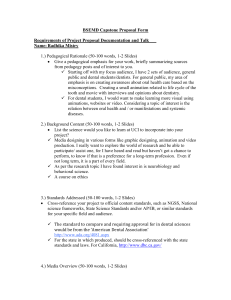MS Word - Case Reports in Odontology
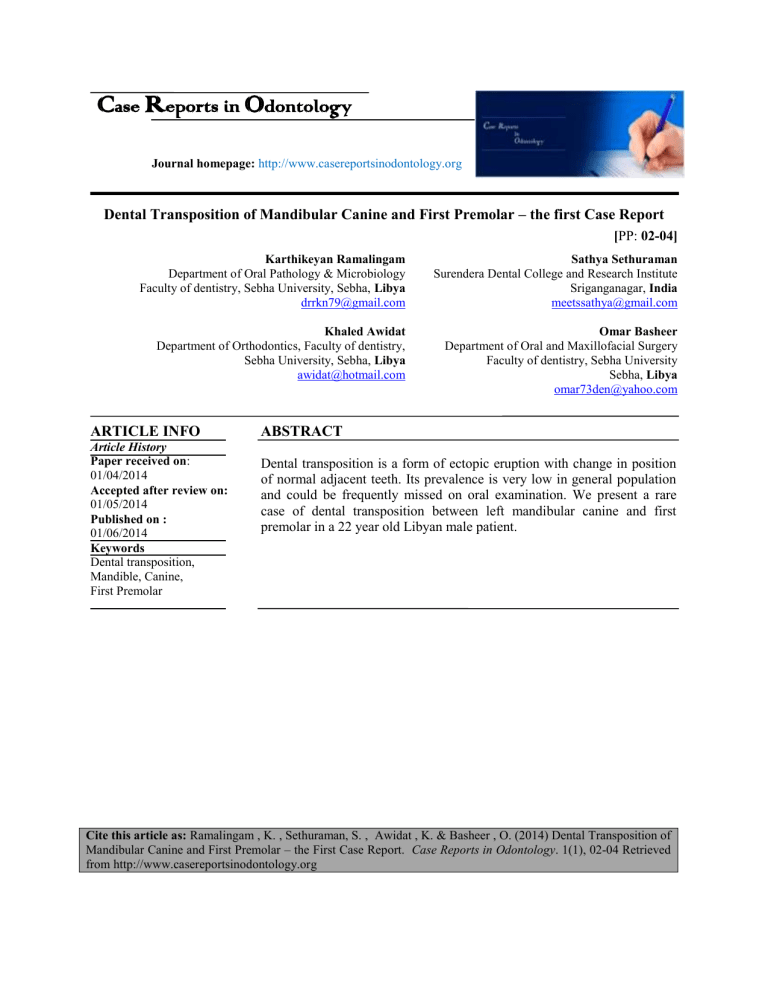
C ase
R eports in
O dontology
Journal homepage: http://www.casereportsinodontology.org
Dental Transposition of Mandibular Canine and First Premolar – the first Case Report
[ PP: 02-04]
Karthikeyan Ramalingam
Department of Oral Pathology & Microbiology
Faculty of dentistry, Sebha University, Sebha, Libya drrkn79@gmail.com
Khaled Awidat
Department of Orthodontics, Faculty of dentistry,
Sebha University, Sebha, Libya awidat@hotmail.com
Sathya Sethuraman
Surendera Dental College and Research Institute
Sriganganagar, India meetssathya@gmail.com
Omar Basheer
Department of Oral and Maxillofacial Surgery
Faculty of dentistry, Sebha University
Sebha, Libya omar73den@yahoo.com
ARTICLE INFO ABSTRACT
Article History
Paper received on :
01/04/2014
Accepted after review on:
01/05/2014
Published on :
01/06/2014
Dental transposition is a form of ectopic eruption with change in position of normal adjacent teeth. Its prevalence is very low in general population and could be frequently missed on oral examination. We present a rare case of dental transposition between left mandibular canine and first premolar in a 22 year old Libyan male patient.
Keywords
Dental transposition,
Mandible, Canine,
First Premolar
Cite this article as: Ramalingam , K. , Sethuraman, S. , Awidat , K. & Basheer , O. (2014) Dental Transposition of
Mandibular Canine and First Premolar – the First Case Report. Case Reports in Odontology . 1(1), 02-04 Retrieved from http://www.casereportsinodontology.org
C ase R eports in O dontology Volume: 1 Issue: 1 January-June, 2014
Introduction
Discussion
Tooth transposition is defined as ‘the positional interchange of two adjacent teeth – particularly of the roots – or the development or eruption of a tooth in a position occupied normally by a non-adjacent tooth ‘– Peck et al
[1]
. Tooth transposition is an anomaly of eruption characterized by interchanged position of two adjacent teeth
[2]
.
Mandibular transposition is rare and it is frequently reported only with mandibular canine and lateral incisor [2] . To the best of our knowledge, we report the first case report of dental transposition of mandibular canine and first premolar of a Libyan patient in
English literature.
Case Report
A 22-year-old male patient of Libyan origin, reported to the outpatient department of Faculty of Dentistry, Sebha University,
Sebha, Libya. He complained of pain in a decayed tooth in lower left front region. He also complained of food impaction between teeth and difficulty in mastication. His medical history and personal history was non-contributory. Past dental history revealed that he had undergone uneventful extraction.
The intraoral examination revealed transposition of left mandibular canine and first premolar. The mandibular canine was rotated medially and there was spacing between the first premolar and lateral incisor
(Figure 1). Intra-oral periapical radiograph revealed dental transposition along with carious lesions in 33 and 34 besides remaining root of 35 (Figure 2).
The patient was advised restoration of carious teeth, extraction of the root stumps and orthodontic correction.
Dental transposition is identified as complete transposition when the crowns and the roots of the involved teeth exchange places in the dental arch and incomplete transposition when the crowns are transposed, but the roots remain in their normal positions. The canine is one of the most commonly involved teeth in the transposition phenomenon
[3].
Etiology of transposition is not known. Proposed causes include abnormal displacement of tooth bud or deviation during tooth development, genetic interchange between tooth buds, mechanical interferences in eruption, early loss or prolonged retention of deciduous teeth
[2].
In general population, the prevalence of dental transposition is around 0.4%. It frequently involves mandibular canine/lateral incisor and on the left side [3, 4] . Herewith, we give the first report of mandibular canine transposition and first premolar in a male
Libyan patient for the first time in English literature.
Conclusion
The true cause of such anomalous eruption could be elucidated only with genomic investigations. We recommend an accurate oral examination for identifying such rare anomalies, initiate prompt treatment for restoration of esthetics and occlusion.
Cite this article as: Ramalingam , K. , Sethuraman, S. , Awidat , K. & Basheer , O. (2014) Dental Transposition of Mandibular Canine and First Premolar – the First Case Report. Case Reports in Odontology . 1(1), 02-04
Retrieved from http://www.casereportsinodontology.org
Page | 3
C ase R eports in O dontology Volume: 1 Issue: 1 January-June, 2014
References Figure: 2 Intra-oral Periapical radiograph revealing the dental transposition of 33 and 34
1. Peck L, Peck S, Attia Y. Maxillary canine – First premolar Transposition associated dental anomalies and genetic basis. The Angle Orthodontist 1993; 63:
99 – 109.
2. Doruk C, Babacan H, Bicakci A. Correction of a mandibular lateral incisor-canine transposition.
American Journal of Orthodontics and Dentofacial orthopedics. 2006; 129:1: 65-72.
3. Yılmaz HH, Türkkahraman H, Sayın MO.
Prevalence of tooth transpositions and associated dental anomalies in a Turkish population.
Dentomaxillofacial Radiology 2005; 34:1: 32-35.
4. Ely NJ, Sherriff M, Cobourne MT. Dental transposition as a disorder of genetic origin. European
Journal of Orthodontics 2006; 28: 145-151.
Legends
Figure: 1 Clinical intra-oral picture showing dental transposition between mandibular canine and first premolar
Cite this article as: Ramalingam , K. , Sethuraman, S. , Awidat , K. & Basheer , O. (2014) Dental Transposition of Mandibular Canine and First Premolar – the First Case Report. Case Reports in Odontology . 1(1), 02-04
Retrieved from http://www.casereportsinodontology.org
Page | 4

